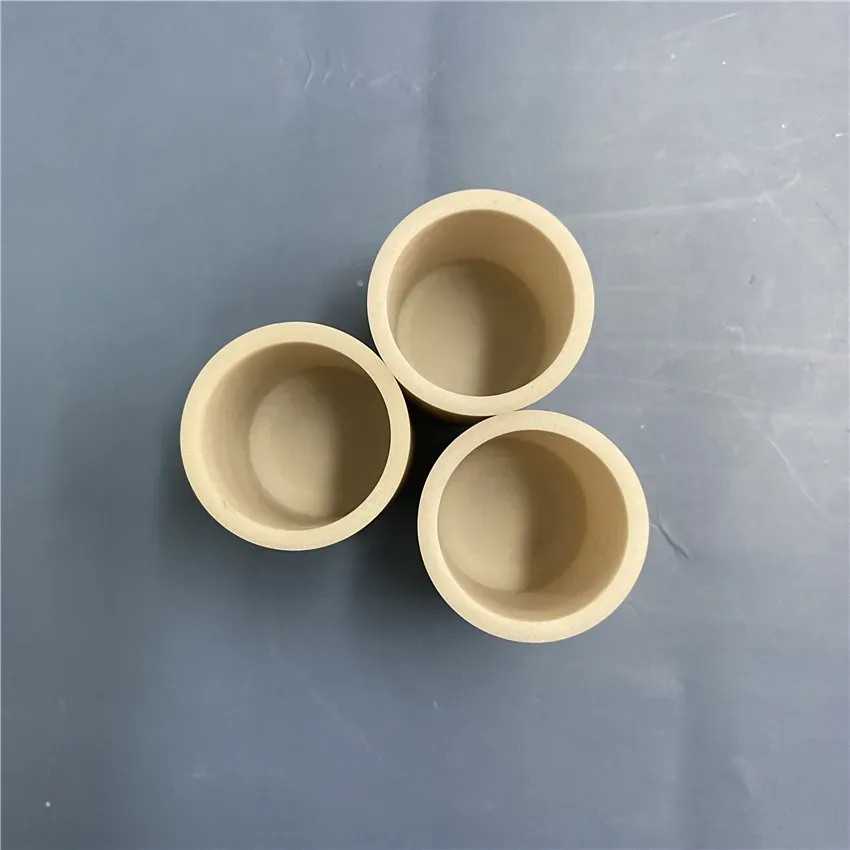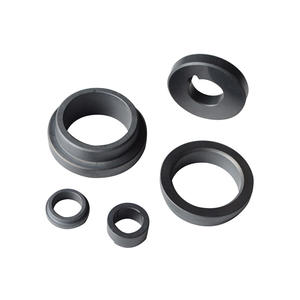Discover Premium Ceramic Products | Durability & Elegance United | Advanced Ceramics
1. Introduction
Silicon carbide crucibles are prized in foundries, labs, and metal casting for their exceptional thermal conductivity, high-temperature stability, and resistance to chemical corrosion. But even the toughest crucibles can fail if misused or poorly maintained. Whether you’re melting aluminum, copper, or specialty alloys, knowing how to troubleshoot common issues can save time, money, and materials.

In this guide, we’ll walk you through five frequent problems users face with silicon carbide crucibles—and give you actionable, step-by-step fixes. We’ll also briefly compare silicon carbide to alternatives like boron carbide and silicon nitride, and highlight how other silicon carbide ceramic products (like tubes, tiles, and dinnerware) share similar care principles.
2. Problem 1: Thermal Shock Cracking
Thermal shock is the #1 cause of premature silicon carbide crucible failure. It happens when the crucible heats or cools too quickly, creating internal stress that leads to cracks.
Solution: Always preheat your crucible gradually.
- Start at 150–200°C (300–400°F) for 15–30 minutes.
- Increase temperature in 200°C (360°F) increments, holding each for 15 minutes.
- Never place a cold crucible directly into a hot furnace or quench a hot one in water.
Pro tip: Store your silicon carbide crucible in a dry, room-temperature environment to avoid moisture absorption, which worsens thermal shock.
3. Problem 2: Oxidation and Surface Degradation
At temperatures above 1,000°C (1,832°F) in oxidizing atmospheres, silicon carbide can oxidize, forming a silica layer that eventually spalls off, thinning the crucible walls.
Solution: Minimize exposure to oxygen at high temps.

- Use a reducing or inert atmosphere (like argon or nitrogen) when possible.
- Apply a protective coating (e.g., boron nitride) to the inner surface before use.
- Avoid unnecessary idle time at peak temperature.
Note: While silicon nitride crucibles offer better oxidation resistance in some cases, they’re often more expensive. A silicon nitride crucible factory may recommend them for ultra-high-purity applications, but for most metal melting, a well-maintained silicon carbide crucible is sufficient.
4. Problem 3: Metal or Slag Adhesion
Molten metal or slag can stick to the crucible interior, making cleaning difficult and risking contamination in future melts.
Solution: Use proper release agents and avoid overfilling.
- Coat the inside with a thin layer of boron nitride or graphite-based release spray before each use.
- Never fill beyond 75% capacity to prevent splashing and overflow.
- After pouring, allow residual metal to solidify slightly before tapping out—this reduces mechanical stress.
Bonus: This principle also applies to other silicon carbide ceramic items like silicon carbide ceramic baking dishes or silicon carbide ceramic casserole dishes—always use non-stick prep to preserve surface integrity.
5. Problem 4: Mechanical Damage During Handling

Silicon carbide is hard but brittle. Dropping, scraping, or using metal tools inside the crucible can cause chips or cracks.
Solution: Handle with care and use proper tools.
- Always lift crucibles with tongs designed for high-temp use—never by the rim.
- Use wooden or ceramic paddles for stirring, not steel rods.
- Store crucibles on soft, flat surfaces away from vibration.
Remember: The same fragility applies to related products like silicon carbide ceramic plates for dinner or silicon carbide ceramic serving bowls—treat them gently, even if they look rugged.
6. Problem 5: Confusion with Similar Materials
Many users mistakenly assume all high-temp ceramics behave the same. For example, boron carbide vs silicon carbide: boron carbide is harder but more expensive and less thermally conductive. Silicon nitride, meanwhile, offers superior fracture toughness but lower thermal conductivity.
Solution: Choose the right material for your application.
- Use silicon carbide crucibles for general metal melting (Al, Cu, brass).
- Consider silicon nitride ceramic components (like silicon nitride rings or custom silicon nitride heat shields) for applications needing impact resistance.
- For structural parts like rbsic silicon carbide tile blocks or silicon carbide ceramic columns, ensure they’re rated for your operating temperature and load.
Also, don’t confuse industrial silicon carbide products (like silicon carbide burner nozzles or silicon carbide thermocouple protection tubes) with consumer items like silicon carbide ceramic butter dishes—they serve very different purposes despite sharing base material properties.
7. Bonus Tips for Longevity
Extend your crucible’s life with these habits:
- Inspect before each use for hairline cracks or pitting.
- Clean with a soft brush—never abrasive pads or acid unless specified by the manufacturer.
- Rotate usage if you have multiple crucibles to avoid overuse.
And while you won’t find a silicon carbide baking dish Staub in your kitchen (Staub uses enameled cast iron), the care principles for high-temp ceramics remain consistent across contexts—from furnace tubes to dinner plates.
8. Conclusion
A silicon carbide crucible is a powerful tool, but it demands respect and proper handling. By avoiding thermal shock, controlling atmosphere, preventing adhesion, handling gently, and understanding material differences (like boron carbide vs silicon carbide or silicon nitride alternatives), you’ll maximize performance and lifespan. Whether you’re working with industrial components like silicon carbide ceramic pipes or everyday items like silicon carbide ceramic dinnerware, the core rules of ceramic care apply: go slow, stay clean, and choose wisely.
Our Website founded on October 17, 2012, is a high-tech enterprise committed to the research and development, production, processing, sales and technical services of ceramic relative materials such as 5. Our products includes but not limited to Boron Carbide Ceramic Products, Boron Nitride Ceramic Products, Silicon Carbide Ceramic Products, Silicon Nitride Ceramic Products, Zirconium Dioxide Ceramic Products, etc. If you are interested, please feel free to contact us.
